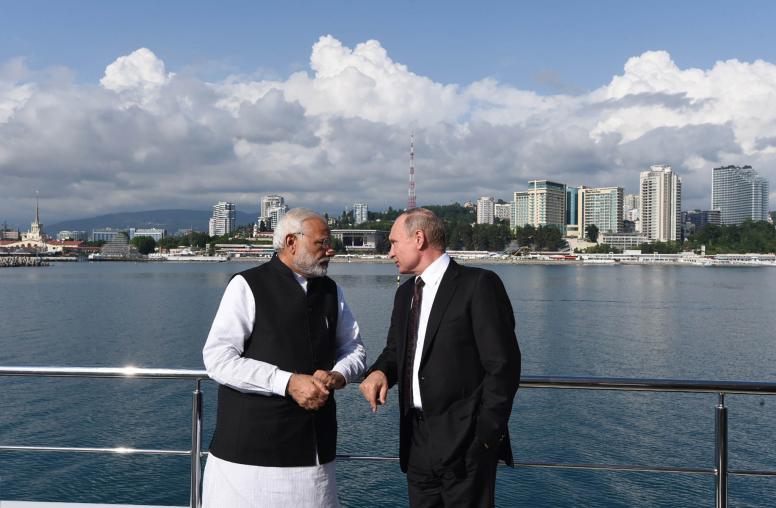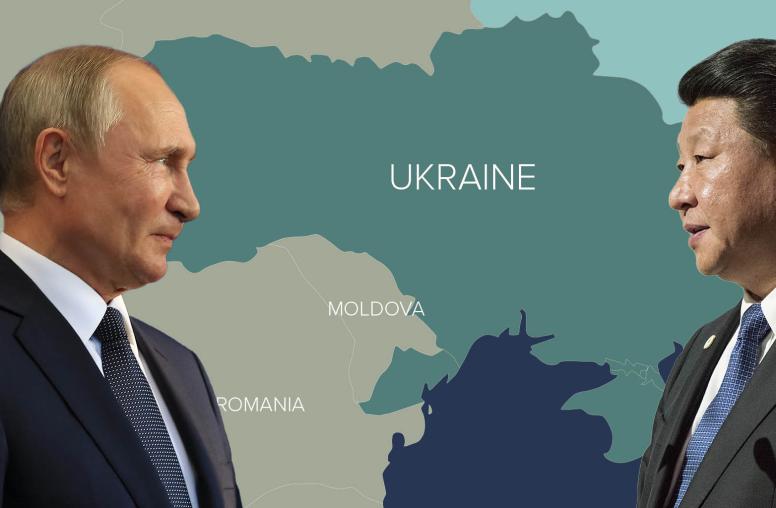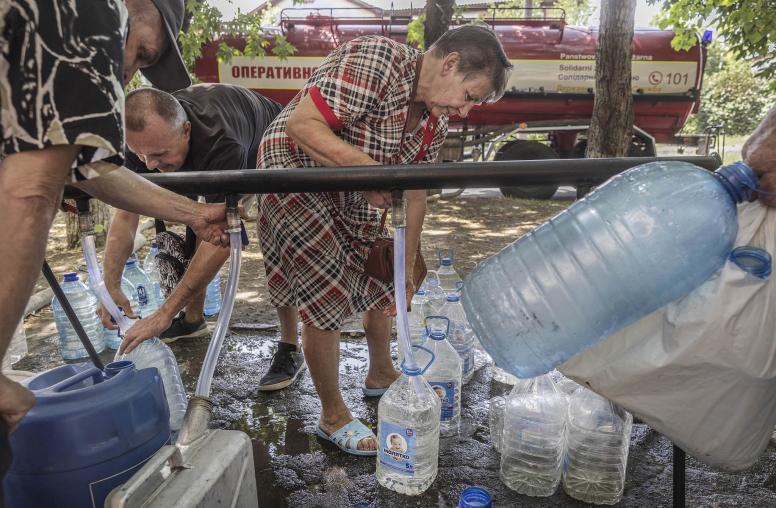Ukraine’s Zelenskyy Asks: Can We Shorten This War?
Ukrainians seek a victory within months, rather than a stalemate of years.
President Volodymyr Zelenskyy seized Americans’ attention yesterday, rushing from a smoking Ukrainian battlefield to ask Congress directly for the help that can let Ukrainians turn back Europe’s most brutal war since Adolf Hitler. Flying home last night, the question Zelenskyy left behind is this: Will the United States trickle out its assistance slowly, perhaps to avoid a Ukrainian collapse but leaving this war to grind for years? Or might Zelenskyy’s impassioned appeal persuade Americans to invest in his ambition to shorten the bloodshed, reversing Vladimir Putin’s invasion in coming months to force him to accept a negotiated off-ramp from the war?

A Shorter, or Longer, War?
That question — whether the United States and NATO are shaping their military and financial help in a way that can shorten this war via Ukraine’s recovery of Russian-seized lands — has hung in the background since last spring. Now, Zelenskyy’s urgent Washington trip shoves it to the fore.
From the shell-shattered frontline city of Bakhmut, where Ukrainian troops battle entrenched Russian soldiers and Wagner Group mercenaries, Zelenskyy dashed to Washington because he, like many Ukrainians, sees America’s policy debate — no less than Bakhmut or Kherson — as a front line to be reinforced at a vital moment of Ukraine’s war for survival and freedom.
The gravel-voiced Ukrainian leader offered that reinforcement on the rostrum of the House of Representatives. Addressing not just Congress but all Americans, he said: “Your money is not charity. It’s an investment in the global security and democracy that we handle in the most responsible way. … You can speed up our victory,” he said, underscoring that the struggle is not simply for Ukrainians’ lands, but for the kind of world our children will live in. On a planet still dense with authoritarian-ruled states, large and small, the reversal of Putin’s invasion is critical to “prove to any potential aggressor that no one can succeed in breaking national borders … committing atrocities and reigning over people against their will.”
So far, Zelenskyy noted, the U.S.-led coalition of democracies has helped Ukraine survive. “We have artillery, yes. Thank you,” he told Congress. But, he asked, “is it enough? Honestly, not really. To ensure Bakhmut is not just a stronghold that holds back the Russian army, but for the Russian army to completely pull out, more cannons and shells are needed.” He compared Bakhmut and its siege to the American Revolution’s Battle of Saratoga, where an American victory over British forces persuaded other powers that the American cause was winnable, and that they should support it.
An acceleration of Western support for Ukraine would not guarantee the reversal of Putin’s aggression that is needed to build an international rule of law rather than of armed might. And it would be only part of any full strategy toward that end.
Over the 10 months of the war so far, “an initial underestimation of the Ukrainians might have contributed to the incremental approach that the United States and NATO have used in providing weapons for Ukraine’s defense,” noted USIP’s Bill Taylor, a former ambassador to Ukraine. “Ukraine’s allies provided smaller weapons — for example, Stinger missiles — at the beginning out of a sense that the struggle was likely going to be a counterinsurgency. Months later, we’ve seen that the Ukrainians have fought the Russians to a standstill and indeed have defeated them in conventional warfare. As Ukraine’s allies have come to see that capacity, we’re now providing heavier, longer-range systems that they need to win.”
Can a Hard Winter Be a Turning Point?
Zelenskyy made his direct appeal to Americans precisely at the start of winter, when Kyiv’s daily average temperatures dip to the 20s Fahrenheit. Vladimir Putin, still unable after 10 months to achieve the swift domination of Ukraine that his government confidently signaled to Russians at the start, now pins his hopes notably on three efforts. One is his brutal air war on Ukrainian towns and cities, smashing the national power grid to leave Ukrainians facing winter without electricity, heat, light and running water. This aerial war crime has produced the same result among Ukrainians that it did for Hitler 82 years ago, when his aerial blitz against London, Coventry and other British cities galvanized Britons, sustaining their resistance.
Putin’s strategy on the battlefield is now to buy time, digging in defensively while his army trains and deploys the hundreds of thousands of Russian men it says it conscripted in Putin’s six-week mobilization of military reservists during the fall. The Kremlin would welcome an effective stalemate on the ground for coming months that, military analysts note, is likely to tilt military and political factors in its favor. Not least, Putin will hope for fatigue and division among Ukraine’s allies that leads them to abandon their support of the Ukrainians.
A third Putin priority is a permanent one: to win as much as possible through intimidation. So as Zelenskyy made his dramatic, direct appeal to Americans yesterday, Putin and his defense minister declared new plans to bulk up Russia’s armed forces by 50 percent, deploy more troops closer to NATO-aligned Scandinavia, update its nuclear force, deploy new intercontinental ballistic missiles and otherwise upgrade the Kremlin’s military muscle. Most of those plans, to whatever extent achievable, will take years. But like Putin’s months of warnings, signals and gestures of possible nuclear warfare or other escalatory horror, yesterday’s announcement was shaped and aimed in a desperate effort to frighten anyone from helping Ukraine.
Putin will hope that his threats will shrink and delay any help that the United States or others will send to Ukraine, and thus let him consolidate a wintertime stalemate that can work in his favor. That stalemate, he will hope would then further weaken international resistance to his war. U.S. officials say that, under current conditions, a stalemate through next year is a highly likely scenario.
With that backdrop, the seminal moment of Zelenskyy’s 10-hour visit to Washington may have been the final question of his White House press conference with President Biden. Reporter Olga Koshelenko, with one of Ukraine’s national TV networks, noted how U.S. military support for Ukraine has responded slowly and incrementally to Ukraine’s expressed needs. “Can we make [a] long story short and give Ukraine all capabilities it needs and liberate all territories rather sooner than later?” she asked.
In a moment of comic honesty, Biden pointed to Zelenskyy and told Koshelenko, “His answer is yes.” Zelenskyy and the room laughed, and he confirmed, “I agree.”
Then Biden got serious, telling Koshelenko that a risk of more quickly arming Ukraine, in hopes of shortening the war through its recovery of Russian-seized territory, is a fracturing of the transatlantic coalition backing Ukraine. “I’ve spent several hundred hours face-to-face with our European allies … making the case as to why it was overwhelmingly in their interest that they continue to support Ukraine,” he said. “They understand it fully, but they’re not looking to go to war with Russia. They’re not looking for a third World War.” Biden added, “There’s more to say, but I probably already said too much.” And then finally, to Zelenskyy, “And as I said, Mr. President, you don’t have to worry — we are staying with Ukraine as long as Ukraine is there.”
In that exchange was crystallized the question that remains as Zelenskyy returns to Ukraine’s darker, colder winter of war.



